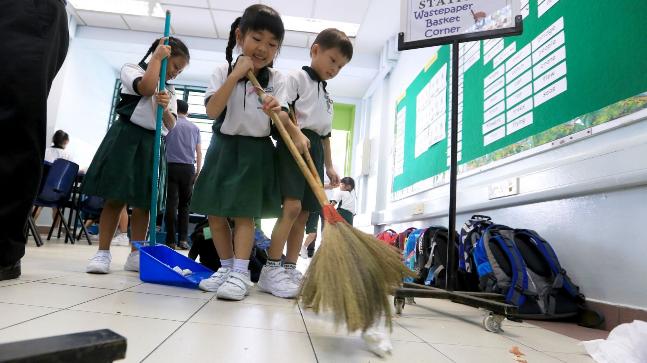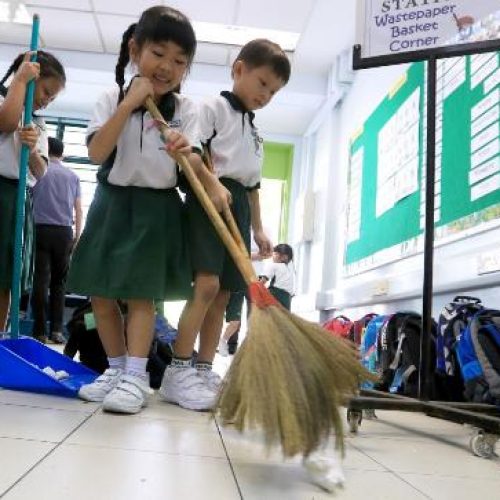“Cleaning bathrooms, learning the art of good table manners & no homework” – How countries with top performing students are reimagining the 21st-century classroom & curriculum.
Each year, the Programme for International Student Assessments (PISA) aims to “evaluate education systems worldwide by testing the skills and knowledge of 15-year-old students.”
Over half a million students from across the globe “are assessed in science, mathematics, reading, collaborative problem solving and financial literacy.” Once all scores are tallied, PISA releases a list of those education systems that have students who are top performers, as well as those that have students who are struggling to keep up with the skills, resources & knowledge required to be a successful student in the 21st century.
Source: http://www.oecd.org/pisa/aboutpisa/
So, what are the top performing countries doing right? And what can those countries that are at the bottom rung of the assessment do to improve the quality of education of their students?
This article will provide a few short examples from selected countries that consistently find themselves ranked among the top 10 and see how best practices in these countries may be adopted by countries such as Pakistan, where a well-rounded education is a far cry, even among its top-tier elite private schools.
Japan (PISA Ranking: 3)

Japanese schoolchildren clean their own classrooms. Image from India Today
The Japanese education system focuses a lot on extracurricular activities, although these do not take precedence over one’s academic performance. Nonetheless, high participation in activities like chess, sports, arts, and social clubs can actually increase the overall value of an institution to a great extent. All schoolchildren in Japan are expected to be a part of at least one club or sports team.
Furthermore, students as young as first graders clean and maintain their classrooms, serve lunch to their classmates and even clean the toilets! This is not a government mandate, but every school follows this national trend with few variations.
Sources
1. Students in Japan clean their own classrooms and school toilets…, India Today
2. Education systems around the world, ExpatFocus
Finland (PISA Ranking: 8)

Schools in Finland encourage collaboration and inquiry-based learning.
Image credit: Olivier Morin/AFP/Getty Images
Finland routinely tops rankings of global education systems and is famous for having no banding systems — all pupils, regardless of ability, are taught in the same classes. As a result, the gap between the weakest and the strongest pupils is the smallest in the world. Finnish schools also give relatively little homework and have only one mandatory test at age 16.
One notable factor that differentiates Finland’s education system from the others is that children aren’t expected to pick up a pen until the age of seven. Before that, school children are primarily encouraged to develop their social skills. Most students rarely get homework until they are well into their teens. School days in the early years are short, and much of the time is spent on educational activities instead of academics. Teachers place a lot of emphasis on play, art, music, dramatics, and storytelling.
Sources
1. Education systems around the world, ExpatFocus
2. The 11 best school systems in the world, The Independent
China* (PISA Ranking: 10)

Schoolchildren in Shanghai can take elective classes that match their interests.
Image from The Telegraph
Beginning in 1985, in an attempt to move away from the high-pressure exam system and increase the quality of education, Shanghai began to allow students to take elective courses, which led to new textbooks and materials. Implemented in 2008, a renewed effort to encourage student learning rather than the accumulation of purposeless knowledge, led to eight curricular “learning domains”: language and literature; mathematics; natural science; social sciences; technology; arts; physical education; and practicum.
Schools were then encouraged to create their own curriculum and outside groups such as museums became partners in education. Part of the new curriculum includes an emphasis on inquiry-based education. Students independently explore research topics of interest to themselves in order to promote social well-being, creative and critical thinking, and again, learning to learn.
From primary school onward, Chinese children receive lessons in the art of queuing, good table manners, how to respect their elders and betters, and the correct way to write letters, emails and even SMS messages.
*Scores for China include only students in Beijing, Shanghai, Jiangsu and Guangdong.
Sources
1. Chinese schoolchildren to sit compulsory manners classes, The Telegraph
2. Shanghai: The world’s best school system, Asia Society
